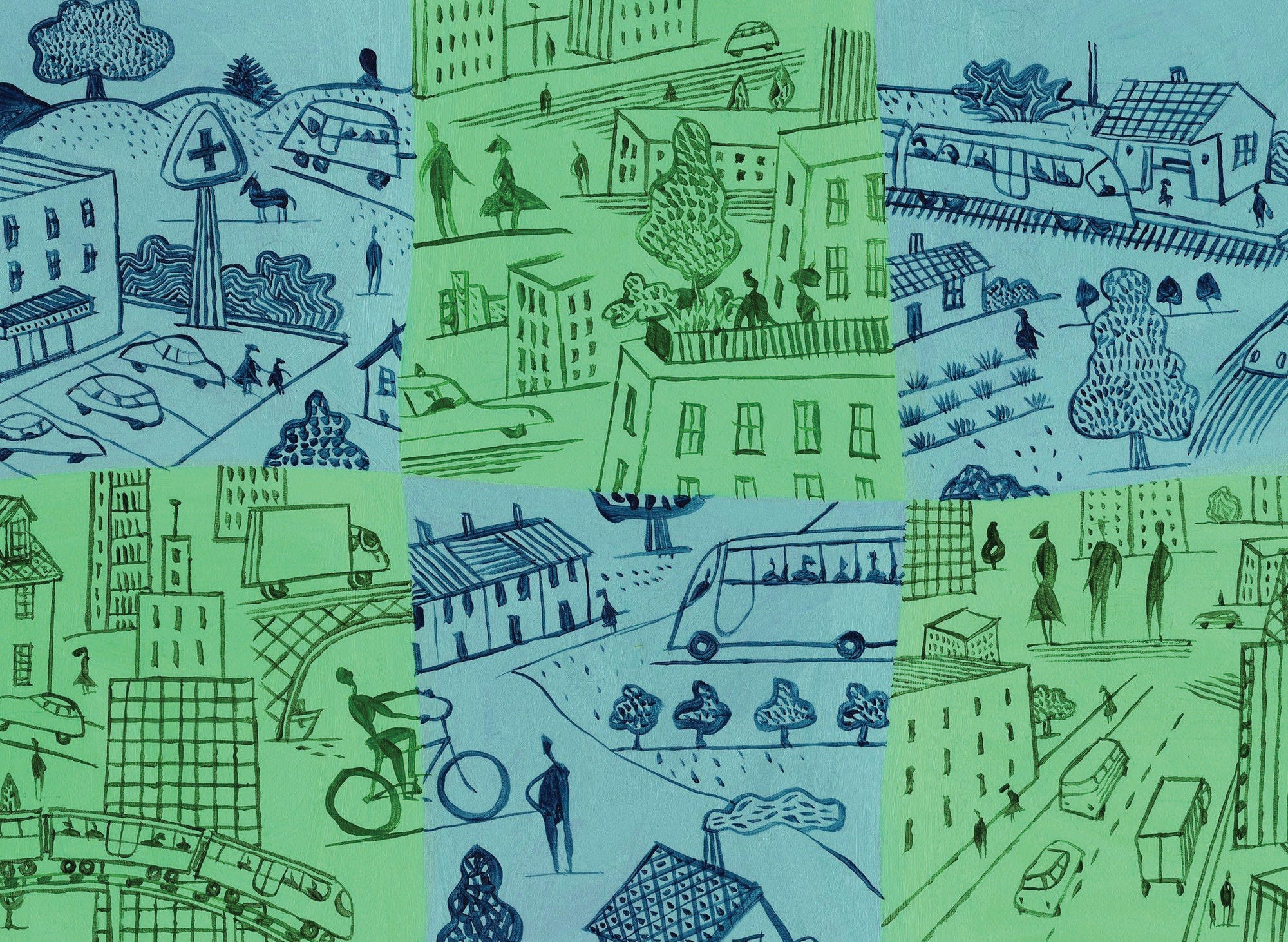Cities in low-income countries are almost four times denser than in high-income countries.
By definition, cities are densely populated areas. However, not all cities are equally dense. On average, cities in low-income countries have the highest densities in the world, close to 10 000 inhabitants per km2, compared to 7 200 in lower-middle-income countries, 5 300 in upper-middle-income and only 2 800 in high-income countries (Figure 4.13). These differences in population density are also noticeable by world regions. In North America, the world region with the lowest density, cities have on average 1 700 inhabitants per square kilometre, which is significantly lower than in the second least densely populated region, Europe, where cities have close to 4 000 inhabitants per square kilometre. In contrast, cities in South Asia and Sub-Saharan Africa are the most densely populated, with an average of 8 000 inhabitants per square kilometre.
Globally, the population density of cities has grown since 2000 practically everywhere, due to widespread population growth. In general, the growth of the city population can occur in three ways. First, new cities can emerge from towns and other smaller settlements by reaching a population of at least 50 000 inhabitants. Second, cities can expand through the emergence of new dense neighbourhoods at their edge. Finally, city population can grow through densification within existing city boundaries (i.e. densification).
Over the last decades, the city densification has gained further importance as the main source of city population growth (Figure 4.14). Between 1975 and 1990, densification accounted for 50% of the global city population growth, while its contribution increased to 60% in 2000-15. Across the period 1975-2015, the importance of city expansion remained unchanged and accounted for roughly a quarter of city population growth. From 1975 to 1990, towns growing into cities accounted for 24% of city population growth but this contribution decreased to 16% in between 2000-15.
The growth of the city population occurred together with the growth of their surrounding commuting zones. Overall, the population in commuting zones surrounding cities have grown at a higher pace than in the cities themselves since 2000. In 2015, the population in commuting zones represented 17% of the overall metropolitan population and 9% of the total world population, compared to 16% and 7% in 1975 respectively. However, these figures do not capture significant differences across country income groups. In high-income countries, the population in commuting zones is often considerable, representing on average 30% of the total FUA population, while it is still negligible in low-income countries. In upper-middle and lower-middle countries, commuting zones account for 18% and 10% of the total FUA population (Figure 4.15).



